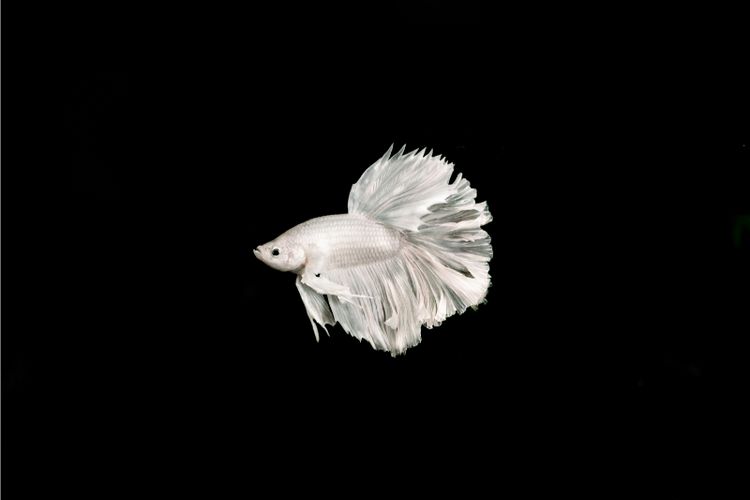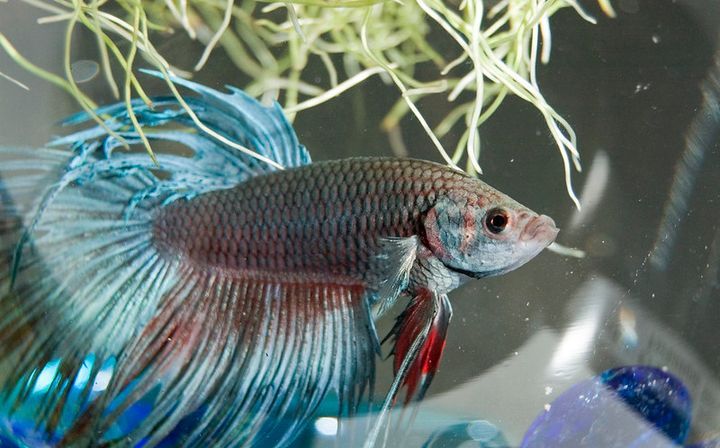Many people buy a betta as their first fish. If this is you, you might be wondering how to change betta fish water. Don’t worry, it’s easier than you think!
Cleaning your betta’s water correctly is vital to keeping your fish happy and healthy. If their tank isn’t cleaned regularly, it can cause illness and death.
How Much Water Should You Remove?
Many people dump out all the water with each cleaning, but this isn’t the best way to go. Instead, you only want to remove a fraction of the water.
If You Have A Filter — DON’T Do A 100% Water Change
Why don’t you want to remove all the water? Surely, that would be the best way to keep your betta’s tank clean.
You Might Kill Beneficial Bacteria
The answer to this mostly has to do with the nitrogen cycle.
In short, a healthy and established tank will have colonies of beneficial bacteria. These bacteria mainly live in your filter media and in the gravel. There isn’t very much in your water column.
Since most of the bacteria live in the filter and gravel, draining all the water usually isn’t much of a problem. If you’re having a bad ammonia or nitrite spike, it might even be necessary to drain the whole tank.
The problem is that most new fish keepers don’t know the correct way to clean. So, besides removing all the water, they will also scrub all the gravel clean. This will kill all the beneficial bacteria and crash the tank.
It Could Shock Your Fish
If you’re performing a 100% water change, you have to be very careful when adding the new water. The new water should be as close to the old water as possible. This means that you need to match the pH and the temperature.
Betta fish don’t handle extreme changes well, so if you don’t match the new water, they may go into shock. This can weaken their immune system, and in extreme cases, can kill them.
Usually, it’s best to just avoid draining the whole tank if you can. This way, you’ll avoid any problems.
If You Don’t Have A Filter — Do 75%-100% Water Changes
Bettas are often a person’s first fish. So, many people don’t know the proper care for a betta when they first start. Most of us have been told our whole lives that bettas are okay in a small bowl of water with minimal care. But, this simply isn’t true.
To really thrive and be healthy, a betta should have at least five gallons of water with a heater and filter. If you don’t have this setup, we recommend upgrading as soon as you can.
In the meantime, you ARE going to need to do large water changes to keep your fish healthy.
Small bowls without a filter get dirty very quickly. They’re likely to build up large amounts of ammonia that can be toxic to your fish.
To minimize this, you’ll need to do 75-100% water changes AT LEAST once a week. But, small bowls often need cleaning two to three times a week to keep the water safe for your fish.
How Much Water Should You Remove?
If you have a tank that is at least five gallons with a filter, then you should perform a 25% water change every one to two weeks.
How To Change Betta Fish Water

Now, you’ll also need to know HOW to remove the water.
Use A Gravel Vacuum
All the leftover fish food and waste are going to accumulate in the gravel at the bottom of the tank. This makes the water toxic.
So, you need to change the water AND clean the gravel.
Our favorite tool to clean the gravel is a gravel vacuum. You stick the suction tool into the gravel and shake the gravel around a bit. The waste will be sucked right out of the aquarium.
Gravel vacuums can sometimes be hard to use with smaller aquariums. You can slow down the flow a bit by placing your thumb lightly over the entrance of the suction tool. But, if you have anything smaller than a 10-gallon tank, a gravel vacuum might be too difficult to use.
Use A Pipette
For smaller tanks, you can use a large pipette instead of a gravel vacuum. You can also stick these into the gravel to suck out the waste.
The difference is that it’s not pulling a continuous flow of water out of the tank. It only pulls as much as you want it to, so it’s often better for smaller tanks.
Prepare The Water The Day Before
Now that you’ve removed the old water, you’ll need to put the new water in the tank. If you can, it’s best to prepare the water the night before you clean your tank. This gives the water a chance to become room temperature, so it’s unlikely to shock your fish.
Simply use a clean bucket to store your water. Keep a lid over the bucket to prevent anything from falling into the water.
Use Dechlorinator
It’s also important to use a dechlorinator in your new water. These remove chlorine and heavy metals from your water that are toxic to fish. Without a dechlorinator, your fish are likely to die.
Our favorite de-chlorinator is API stress coat. Not only does it remove chlorine and heavy metals, but it helps your fish stay calm and gives them a boost.
How Often Should You Change The Water

If you have a filter, then you should change the water once every one to two weeks. Waiting any longer than that gives the waste more time to build up and make the water toxic.
If you don’t have a filter, you’ll need to change the water two to three times a week.
Conclusion
If your tank has a filter, remove about 25% of the water with each cleaning. If you don’t have a filter, you should do a 100% water change two to three times a week.
If you do this, you’ll easily maintain a healthy environment for your fish. A happy and healthy betta can make a great pet for many years!

